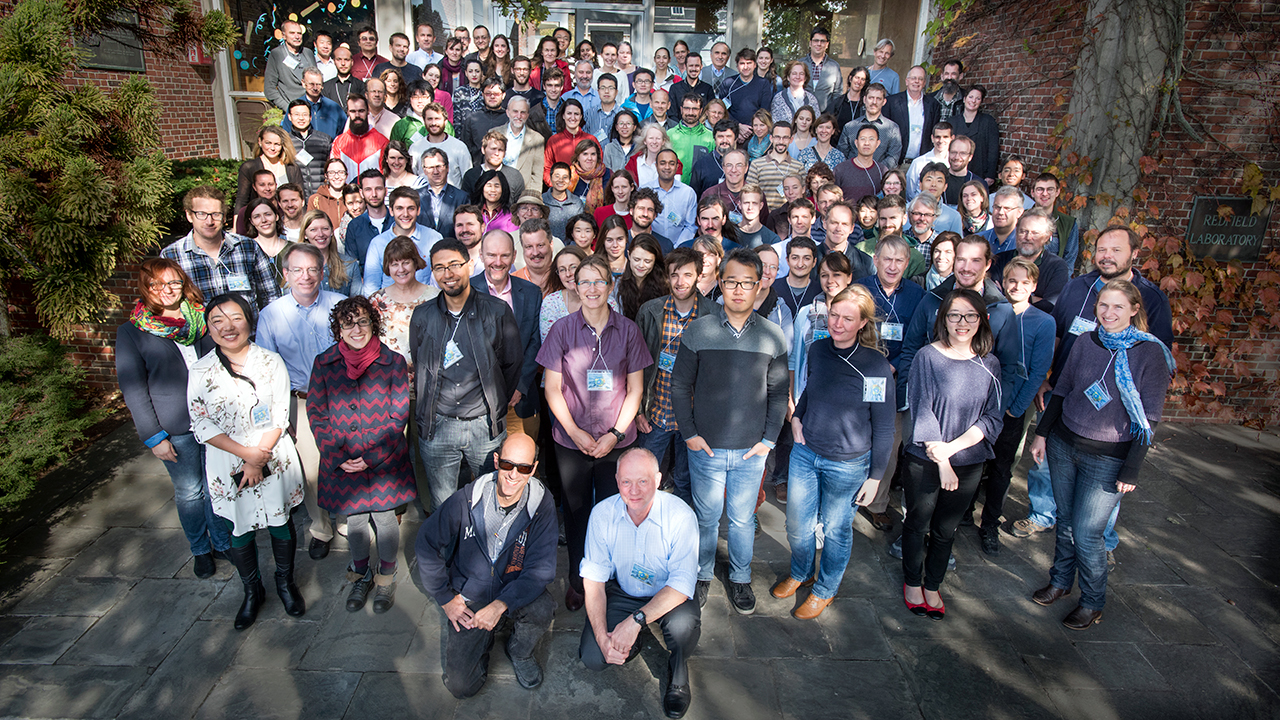PAOC Spotlights
Observing and modeling the Arctic Ocean and Sea Ice: A Meeting in Woods Hole
Last November, a group of MIT researchers joined scientists from around the world to attend the fifth meeting of the Forum for Arctic Modeling & Synthesis (FAMOS) at the Woods Hole Oceanographic Institution.
Project participants from MIT included Prof. John Marshall, research scientists Jeff Scott and Jean Michael Campin, postdocs Gianluca Meneghello and Ruth Musgrave, and graduate student Cristina Schultz.
 FAMOS is an international effort aimed at strengthening collaborations among Arctic researchers and synthesizing results from field studies, models, experiments and observations to gain a better understanding of the Arctic climate system. The project was born out of the Arctic Ocean Model Intercomparison Project (AOMIP), which identified systematic errors in Arctic Ocean models to reduce uncertainties in model results and climate predictions. FAMOS builds on this and focuses on how we can best observe and model the myriad processes and mechanisms driving Arctic Ocean and sea ice changes. The ultimate goal is to develop and deploy advanced observing systems and models capable of describing past Arctic conditions up through current day and into the future.
FAMOS is an international effort aimed at strengthening collaborations among Arctic researchers and synthesizing results from field studies, models, experiments and observations to gain a better understanding of the Arctic climate system. The project was born out of the Arctic Ocean Model Intercomparison Project (AOMIP), which identified systematic errors in Arctic Ocean models to reduce uncertainties in model results and climate predictions. FAMOS builds on this and focuses on how we can best observe and model the myriad processes and mechanisms driving Arctic Ocean and sea ice changes. The ultimate goal is to develop and deploy advanced observing systems and models capable of describing past Arctic conditions up through current day and into the future.
During the meeting, MIT Oceanographer John Marshall presented a key FAMOS theme: ‘Climate Response Functions for the Arctic Ocean’. Developed and led by Marshall, MIT researcher Jeff Scott and WHOI’s Andrey Proshutinsky, the group proposes to use coordinated Arctic modeling experiments to study how changes to external forcing affects the Arctic’s response, particularly, “the transient response of key observable indicators such as sea-ice extent, freshwater content of the Beaufort Gyre etc. to abrupt ‘step’ changes in forcing fields across a number of Arctic models.”
Later in the week, attendees gathered in working groups to discuss the individual aspects of the FAMOS project. In addition to Climate Response Functions for the Arctic Ocean, these included Accumulation and Release of Freshwater, Arctic Eddies, Biogeochemical Modeling and Observations, Gyres, Sea Ice, Atlantic, FAMOS for YOPP and Mixing.
In the coming year, participants will meet to coordinate experiments, share results and synthesize what they’ve discovered before reconvening for the 6th FAMOS meeting. Watch talks from the 5th meeting and follow their progress on the new FAMOS site.